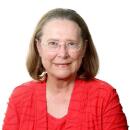The day Krushchev came to town
- Share via
Larry McKinney remembers the day Nikita Khrushchev came to town. It was Sept. 20, 1959, Dwight D. Eisenhower was president and the United States and the Soviet Union were in the midst of the Cold War.
The Soviet Union had launched the world’s first artificial satellite, Sputnik 1, two years before, on Oct. 4, 1957, marking the start of the Space Age. Americans, caught off guard by this development, feared they might also be able to launch ballistic missiles that could carry nuclear weapons from Europe to the United States. Bomb shelters became a popular topic of conversation.
In July 1959, Vice President Richard Nixon traveled to Moscow and attended an American exhibition with Khrushchev. As they walked through a model kitchen, the duo exchanged angry words which went down in history as the “kitchen debate.”
That same year, Khrushchev made a ceremonial visit to several major U.S. cities. During his stay in Los Angeles, he visited the set of the film “Can-Can,” starring Shirley MacLaine, and wanted to go to Disneyland, but was his request was denied for lack of adequate security.
The Soviet premier and his entourage left Los Angeles on a special train headed for San Francisco, stopping for just a few minutes at the Glendale station. McKinney, who was then a senior at Glendale High School, had followed the Russian leader’s trip on the news and had heard that his train would stop in Glendale.
“We were curious to see him,” he said. “He was on the news every day while he was on his trip.”
McKinney and two of his buddies, Nick Jones and Todd Grant, made a last-minute decision to drive down to the train station and found themselves in the midst of a crowd of about 800 people.
“They said he was on the Daylight, but it came through and we didn’t see anything, then, right behind was another train carrying him and his group,” he said.
“He had a big window and he stood there for quite a while and waved. There were some anti-Communist people carrying signs. When he saw them, he made a circular motion with his hand indicating that he thought they were crazy. We were hoping he would come out and stand at the end of the train, but I guess the Secret Service was really nervous, so he didn’t.”
Former Glendale News-Press columnist Nat Read recalled Khrushchev’s visit in a March 3, 1995, column.
Read noted that several Glendale High School students carried hand-lettered, two-sided signs with friendly English phrases such as
“We like Khrushchev” and “Peace on Earth” on one side. But, Read wrote, some of the Russian phrases on the reverse side were not translations of the English greetings. Instead, one said “Welcome Murderer.” Other signs said “Independence for Kazaks of Russia” and “Nice work in Hungary, Nikita.”
McKinney said he didn’t know any of the students who were carrying the signs and that politics didn’t influence his decision to go to the station.
“It wasn’t anything political,” he said. “This was the second most powerful man in the world and he was coming to Glendale. We were excited to see him.”
Although McKinney lived in La Crescenta, he attended Glendale High School.
“There was no Crescenta Valley High School, yet,” he said. “Students had to take the school bus or drive. Most of the boys could hitchhike. We’d stand in front of the high school and get rides home from businessmen or housewives going back home. They’d just pick us up.”
After reading about the Sears Christmas windows in Verdugo Views, Dec. 23, 2005, Richard Lee of Glendale wanted to know when the store was remodeled and the windows plastered over. It took a while to find the answer, but according to Bruce Herman, who grew up in Glendale and is an avid hiStorian, the year was 1974. Herman said he remembered the date because for several months in 1974 he lived next to a fellow “who had a brother who was on the construction crew. I remember going by Sears and seeing him at work and talking to him on the job site.”
